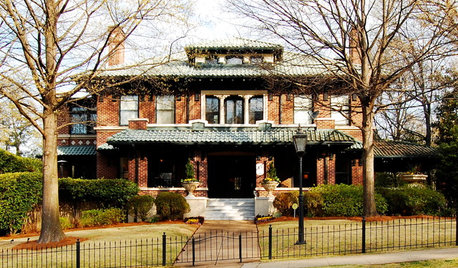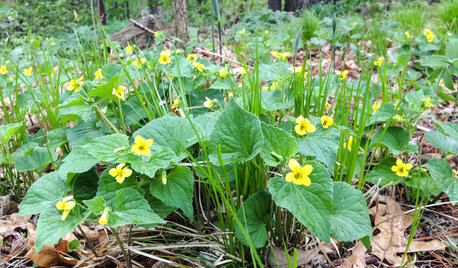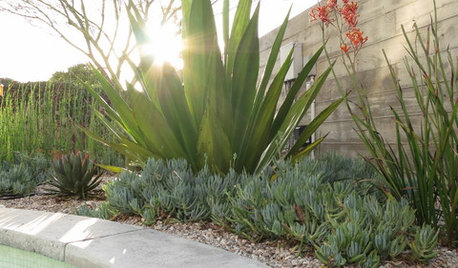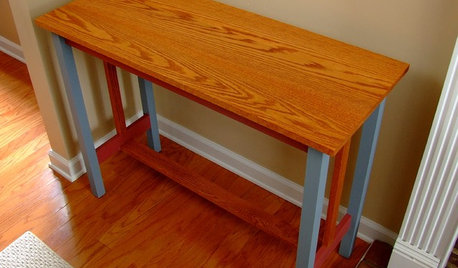Pothos - small holes on the leaves and leaves yellowing :(
PothosOwner
13 years ago
Featured Answer
Sort by:Oldest
Comments (21)
rhizo_1 (North AL) zone 7
13 years agolast modified: 9 years agoPothosOwner
13 years agolast modified: 9 years agoRelated Professionals
Washington Landscape Architects & Landscape Designers · Frisco Landscape Contractors · Americus Landscape Contractors · Arlington Landscape Contractors · Cockeysville Landscape Contractors · Eureka Landscape Contractors · Galveston Landscape Contractors · Kerman Landscape Contractors · Melrose Park Landscape Contractors · Raleigh Landscape Contractors · Red Oak Landscape Contractors · Rio Linda Landscape Contractors · Washington Landscape Contractors · Irvington Landscape Contractors · New Providence Interior Designers & Decoratorstapla (mid-Michigan, USDA z5b-6a)
13 years agolast modified: 9 years agoPothosOwner
13 years agolast modified: 9 years agoPothosOwner
13 years agolast modified: 9 years agotapla (mid-Michigan, USDA z5b-6a)
13 years agolast modified: 9 years agoPothosOwner
13 years agolast modified: 9 years agotapla (mid-Michigan, USDA z5b-6a)
13 years agolast modified: 9 years agoPothosOwner
13 years agolast modified: 9 years agotapla (mid-Michigan, USDA z5b-6a)
13 years agolast modified: 9 years agoPothosOwner
13 years agolast modified: 9 years agotapla (mid-Michigan, USDA z5b-6a)
13 years agolast modified: 9 years agoPothosOwner
13 years agolast modified: 9 years agotapla (mid-Michigan, USDA z5b-6a)
13 years agolast modified: 9 years agoUser
8 years agolmontestella
8 years agolast modified: 8 years agoUser
8 years agolmontestella
8 years agoUser
8 years agovdroke007
7 years ago
Related Stories

FALL GARDENING5 Ways to Put Fall Leaves to Work in Your Garden
Improve your soil and yard the organic way with a valuable garden booster that grows on trees
Full Story
LAUNDRY ROOMSRoom of the Day: The Laundry Room No One Wants to Leave
The Hardworking Home: Ocean views, vaulted ceilings and extensive counter and storage space make this hub a joy to work in
Full Story
DECORATING GUIDES9 Easy Ways to Decorate With Autumn Leaves
Give your home a burst of color that can be used Halloween through Thanksgiving
Full Story
GARDENING GUIDESWhat's Wrong With My Plant? Leaves Often Hold the Clues
Learn how to identify common plant ailments by reading their leaves
Full Story
REMODELING GUIDESInterior Brick: Paint it or Leave It?
Here's how to know if covering that brick is a sin or solution
Full Story
ARCHITECTUREStates of Style: Alabama’s Icons Leave Their Mark
In the first of a new series, discover the natural beauty, the architectural icons and some of our favorite homes deep in the heart of Dixie
Full Story
HOUSEKEEPINGQuick Fix: How to Patch a Drywall Hole
Dents and dings disappear, leaving your walls looking brand new, with this fix that even a novice can do
Full Story
GARDENING GUIDESGreat Design Plant: Viola Pubescens Dots Woodlands With Yellow
Plant downy yellow violet in eastern U.S. woodland gardens for its heart-shaped leaves and bright yellow flowers
Full Story
PLANTING IDEASBig Foliage for Small Spaces
Use bold, large-leaved plants to create intriguing contrast in a garden where they’re least expected
Full Story
DIY PROJECTSPocket Hole Joinery, the Beginning Woodworker's Best Friend
Make a wide range of sturdy wooden pieces with just this little bit of know-how
Full Story








tapla (mid-Michigan, USDA z5b-6a)